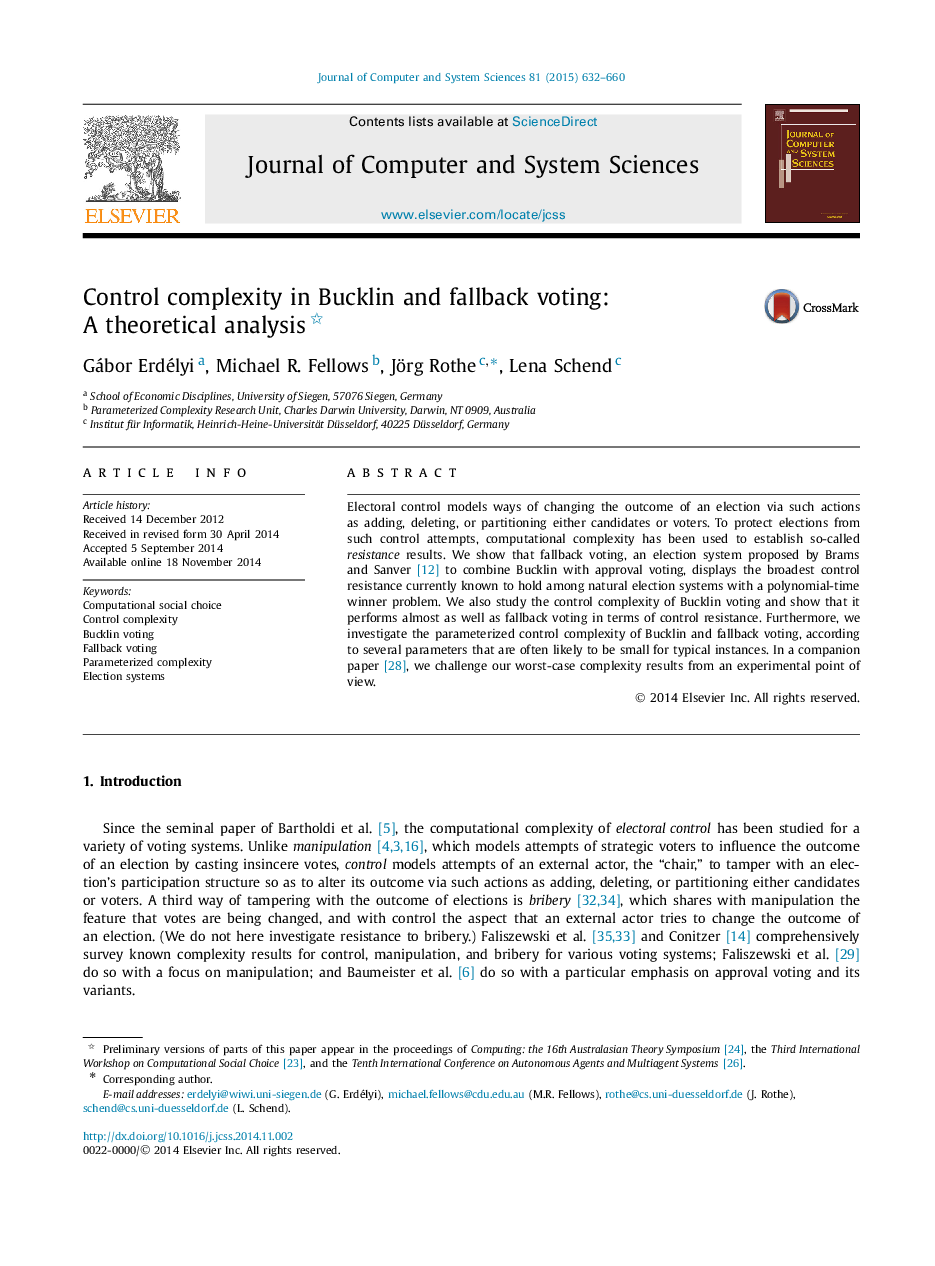| Article ID | Journal | Published Year | Pages | File Type |
|---|---|---|---|---|
| 430661 | Journal of Computer and System Sciences | 2015 | 29 Pages |
•Electoral control models ways of changing the outcome of an election via adding, deleting, or partitioning candidates or voters.•A long-running project of research seeks to classify the major voting systems in terms of their computational resistance.•We show that fallback voting is resistant to each of the common types of control except two destructive control types.•We show that Bucklin voting performs almost as well as fallback voting in terms of control resistance.•We investigate the parameterized control complexity of Bucklin and fallback voting.
Electoral control models ways of changing the outcome of an election via such actions as adding, deleting, or partitioning either candidates or voters. To protect elections from such control attempts, computational complexity has been used to establish so-called resistance results. We show that fallback voting, an election system proposed by Brams and Sanver [12] to combine Bucklin with approval voting, displays the broadest control resistance currently known to hold among natural election systems with a polynomial-time winner problem. We also study the control complexity of Bucklin voting and show that it performs almost as well as fallback voting in terms of control resistance. Furthermore, we investigate the parameterized control complexity of Bucklin and fallback voting, according to several parameters that are often likely to be small for typical instances. In a companion paper [28], we challenge our worst-case complexity results from an experimental point of view.
